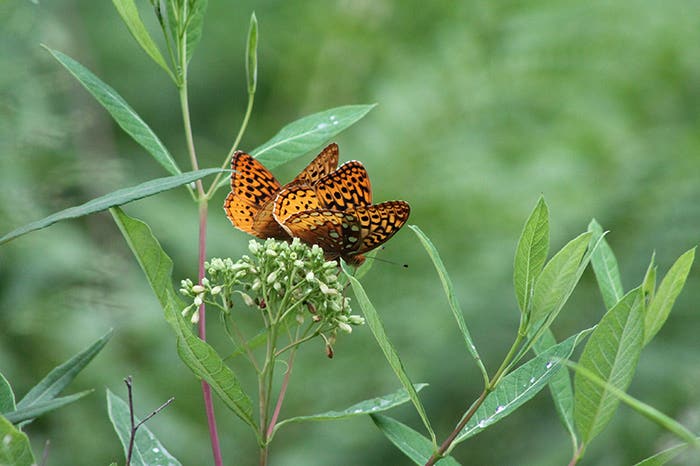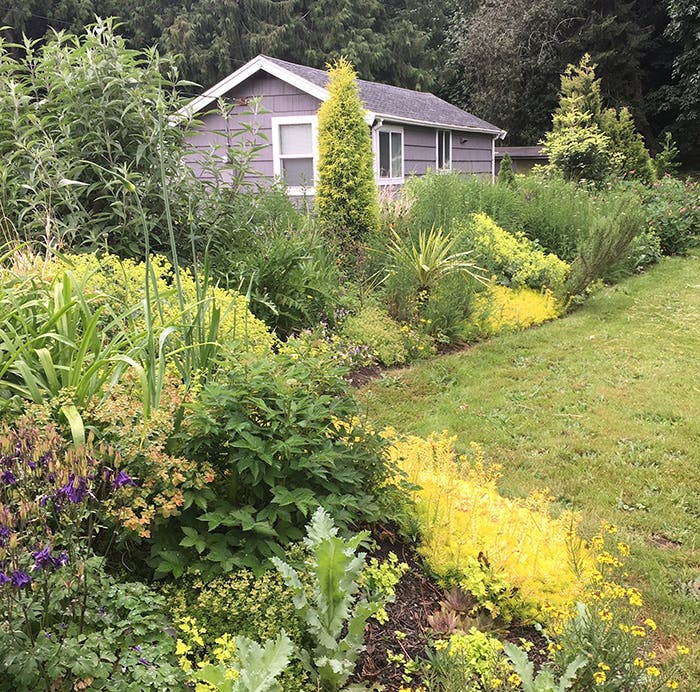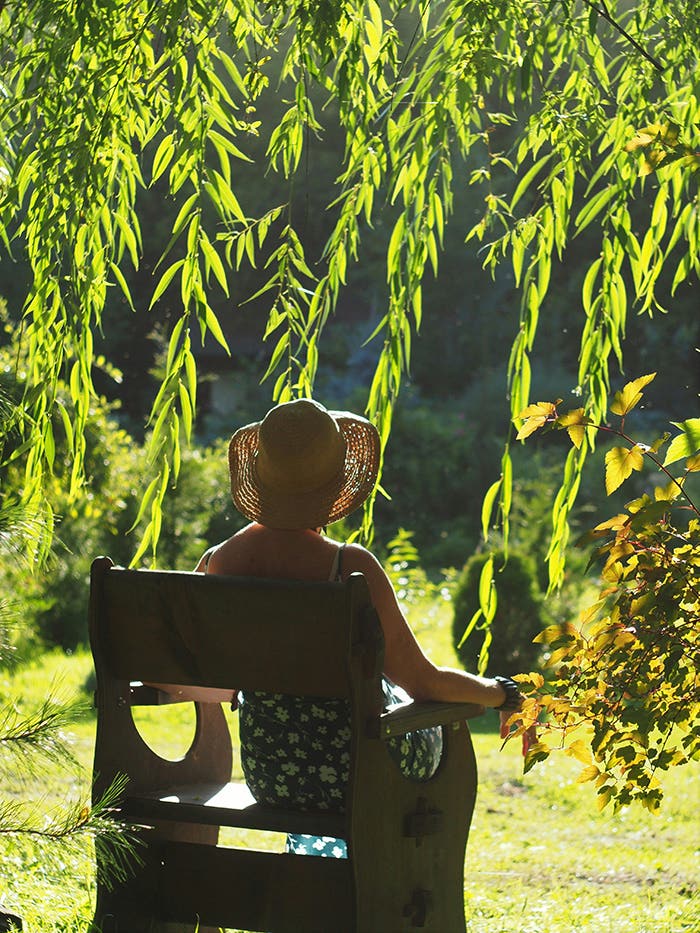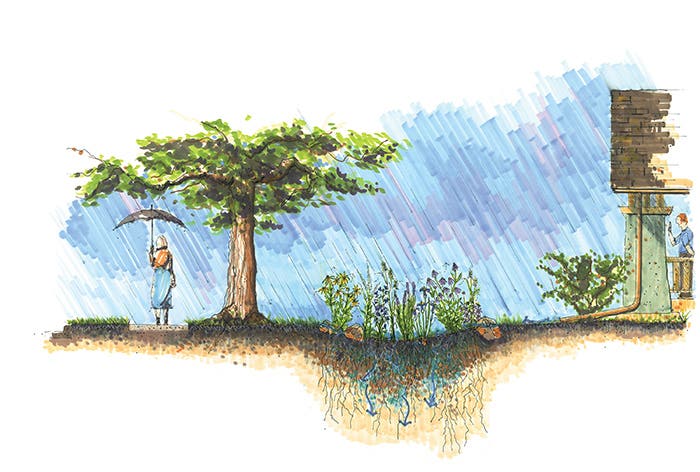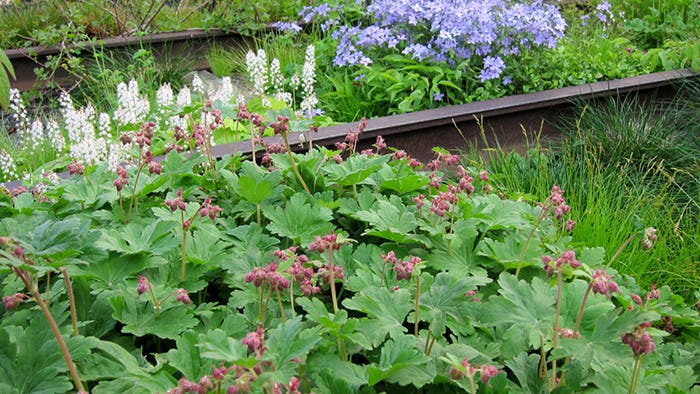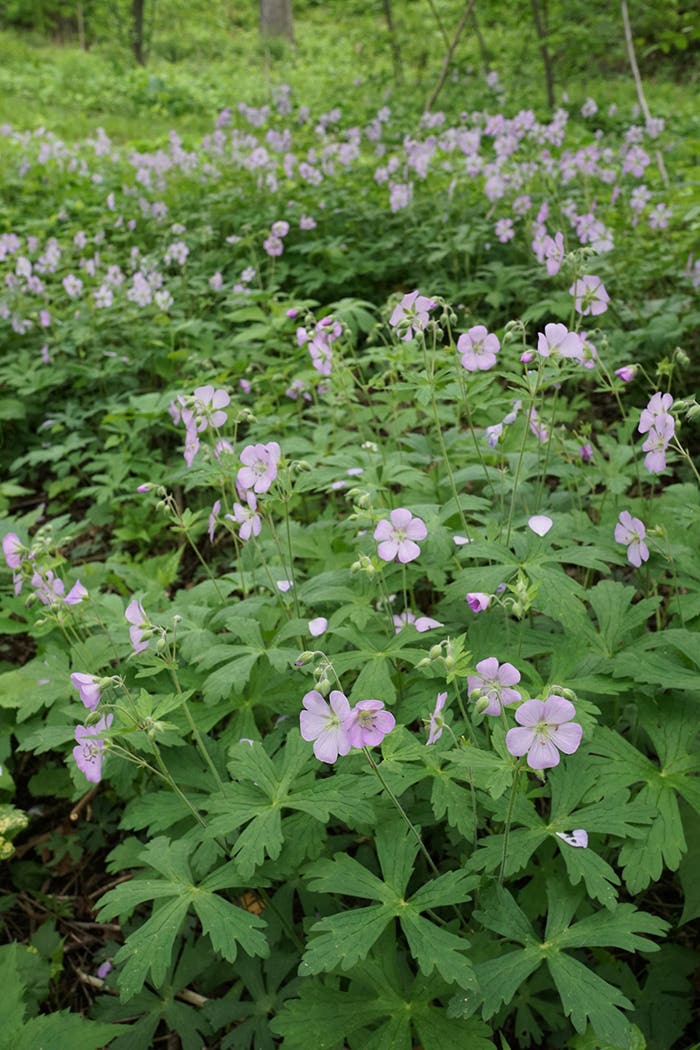Thorny Hedges Can Keep Deer Out
Text by Jesse Vernon Trail for the March/April 2017 issue of Horticulture Several years ago, I lived and worked right at the border of the United States and Canada. It…
Text by Jesse Vernon Trail for the March/April 2017 issue of Horticulture
Several years ago, I lived and worked right at the border of the United States and Canada. It would be folly to attempt to cross the border at that farm, for all along its length grew a barrier hedge of very thorny blackberry plants, 8 or 10 feet tall and deep. Formidable indeed—but, oh, what delicious fruits!
Many of us want or need such an obstacle to deter unwanted animal (or human) intruders. Here are some of the best hedges of thorns.
Brambles, Rubus
The brambles (Rubus spp.) include not just blackberries and raspberries, but also the wild salmonberry (R. spectabilis), dewberries (R. trivialis and R. flagellaris) and many more. Then there are the hybrids that have been developed, such as the boysenberry, tayberry, youngberry and loganberry. That makes lots of choices, but all told, the best natural hedge is the fast-growing blackberry.
Keep in mind that blackberries and raspberries, as well as other brambles (to varying degrees), spread by underground stems. This is an advantage in creating a dense barrier hedge, but can be problematic if the blackberry strays into other garden beds. Leave some open ground alongside the bramble hedge; then it’s easy to mow down any unwanted shoots as they pop up. The plants will require some pruning to keep them healthy and fruitful—remove dead canes in summer, and pinch the tops off of the newest canes after they’ve fruited, to encourage side branching. Those side shoots result in more fruit as well as a better barrier.
Firethorn
Firethorn (Pyracantha coccinea; Zones 6–9) is a fast-growing barrier plant with arching, thorny branches typically making it about eight to ten feet high and wide. (Editor’s note: Pyracantha coccinea is listed as an invasive plant in California and Georgia; see invasiveplantatlas.org.) It has glossy, rich green foliage and profuse white flower clusters in spring, followed by abundant bright red or orange berries in fall and winter (edible, but quite flavorless). It is often trained against a wall, on a trellis or along a fence or grown as an informal, almost formidable hedge. The plant, drought tolerant, once established, adapts to various soils, but a well-drained, moisture retentive soil is preferred, especially in hot and dry summers. It can tolerate quite shady locations, but full sun results in more flowers and berries. Pruning is often necessary to control the size of firethorn, but keep in mind that the fruits are produced on second-year wood. In areas exposed to bitterly cold winter winds, the foliage may brown slightly.
There are several cultivars and hybrids available, including ones with yellow berries. ‘Kasan’ has orange-red fruit. ‘Orange Glow’, with vivid orange berries, is said to be less hardy than the species. ‘Fiery Cascade’ has small red fruits in abundance. ‘Fructo-Luteo’ develops bright yellow berries that ripen to a golden yellow.
Wintergreen barberry
Berberis julianae is known as wintergreen barberry perhaps because of its lustrous, rich evergreen foliage. New leaves emerge a bright copper color before turning to deep green. In autumn they change again to shades of reddish bronze. This moderate- to fast-growing, dense shrub from China grows to about six to eight feet high and wide. Like other barberries, it has spiny leaves and stems that make it an excellent security barrier. Or simply grow it as an outstanding accent plant or as a privacy screen. In late spring it bears abundant clusters of small, golden flowers that emerge from vibrant tangerine-colored buds and bracts. They are said to be sweetly lilac scented. These are followed in autumn by waxy, bluish-black berries.
The wintergreen barberry prefers full sun to light shade and moist, well-drained, slightly acid soils. Although listed as hardy to Zone 5, drying winter winds, extreme cold winter temperatures and winter sun can sometimes cause the plant’s leaves to burn and fall off (abscise). Therefore, plant it in an appropriately sheltered location in cold regions. This species does not appear to respond well to pruning, though a light shearing should cause no problems.
Of the several cultivars, “Nana’ is compact, about half the size of the species. ‘Spring Glory’ has bronze-red new shoots, gracefully arching stems, showy yellow flowers, great orange and red fall color and red berries in fall that often last until winter. It makes a great five- to six-foot hedge or barrier plant.
Hawthorn
The hawthorns (Crataegus spp.) are mostly heat- and drought-tolerant small trees or large shrubs. Many species and cultivars make excellent, highly attractive hedges of thorns. They can be kept informal with spreading to arching branches, or trimmed to be relatively formal and tidy. A beautiful hawthorn hedge is practically smothered with white, pink or red flowers in spring. These are followed by abundant brilliant red fruits, or haws, which make good jams and pies. Hawthorn thorns run from one to five inches long, depending on the species. Truly formidable!
The Washington hawthorn (C. phaenopyrum) is a late-flowering species from the eastern United States with white flowers and foliage that turns orange, red or purple in fall. It typically grows as a small tree but can be pruned as a hedge. Douglas, or black, hawthorn (C. douglasii, shown) is a western species that can be a tree or a thicket-forming shrub. It has white flowers, elegant branches and vivid red fall color.
Jesse Vernon Trail is an author and instructor in environment, ecology, sustainability, horticulture and natural history. Check out his first book, Quiver Trees, Phantom Orchids and Rock Splitters: Remarkable Survival Strategies of Plants at ecwpress.com/products/quiver-trees.
Image credit: Rolf Nussbaumer/Getty Images


